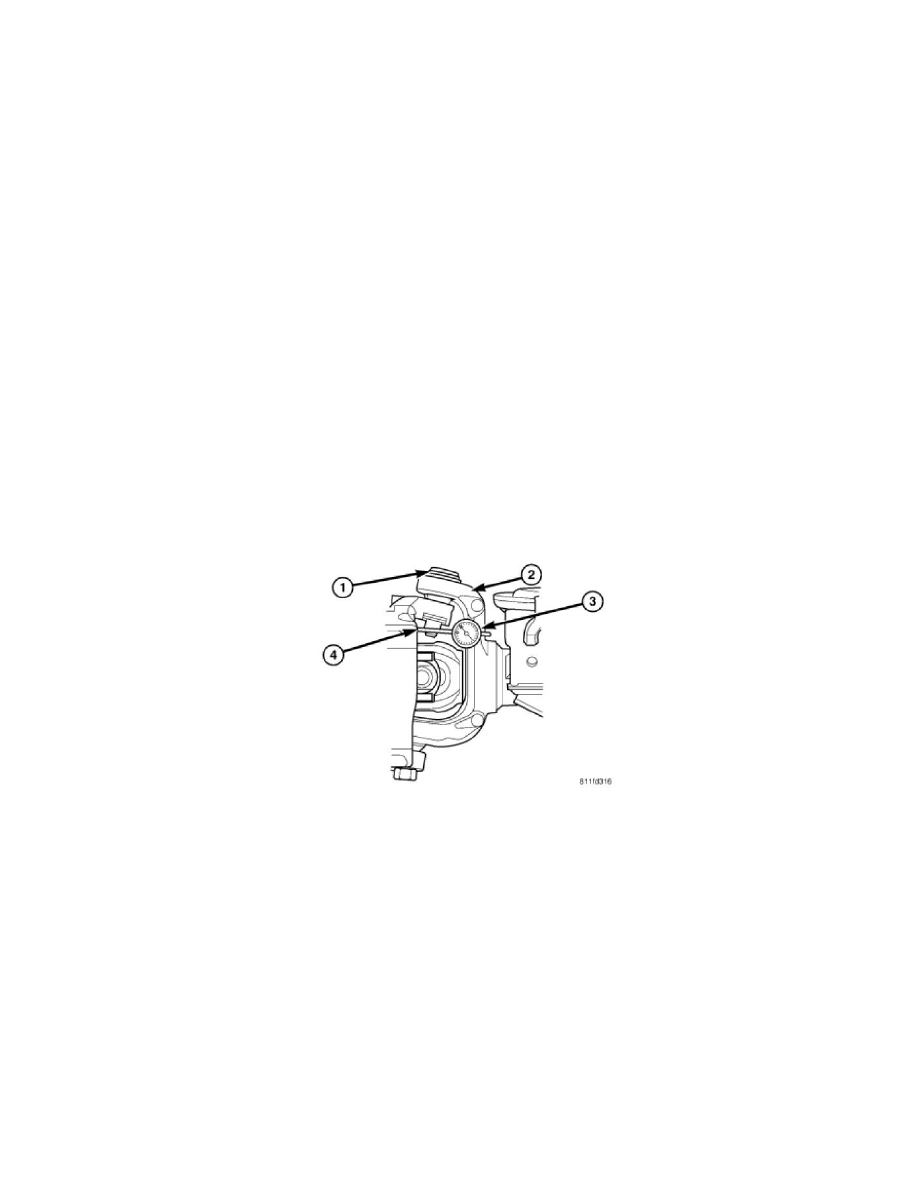RAM 3500 HD Truck 2WD L6-6.7L DSL Turbo (2008)

Ball Joint: Specifications
Front Upper Ball Joint
Diagnosis and Testing - Independent Front Suspension
UPPER BALL JOINT
1. Raise the front of the vehicle. Place safety floor stands under both lower control arms as far outboard as possible. Lower the vehicle to allow the
stands to support some or all of the vehicle weight.
2. Remove the front tires.
3. Mount a dial indicator solidly to the frame and then zero the dial indicator.
4. Position dial indicator plunger on the top side of the upper ball joint.
NOTE: The dial indicator plunger must be perpendicular to the machined surface of the ball joint.
NOTE: Use care not to pry or tear the ball joint boot (5), when checking the free play.
5. Position a pry bar between the steering knuckle and the upper control arm. Pry upwards on the upper control arm.
6. If the travel exceeds 0.5 mm (0.020 in.), replace the upper ball joint See: Service and Repair/Front Upper Ball Joint - Removal .
7. If the upper ball joint is within specs reinstall the front tires See: Wheels and Tires/Service and Repair/Removal and Replacement .
Diagnosis and Testing - Link/Coil
UPPER BALL JOINT
To properly diagnose the upper ball joint two readings from the dial indicator are necessary, The two readings must be added together to find a total ball
joint movement as identified in the steps below.
1. Raise and support the vehicle.
2. Attach a dial indicator (3) with the indicator resting on either the front or back sides of the steering knuckle (4) as close to the upper ball joint (1)
as possible.
3. Set the dial indicator(3) to zero.
4. Grab the tire by pushing in on the top of the tire and pulling out on the bottom of the tire. Record the reading on the dial indicator (3). This will be
the first reading.
5. Set the dial indicator (3) back to zero.
6. Grab the tire by pulling in on the top of the tire and pushing out on the bottom of the tire. Record the reading on the dial indicator (3). This will be
the second reading.
7. Add the two readings together for a total upper ball joint movement. If this reading is above 1.52 mm (0.060 in) then replacement of the upper ball
joint is necessary See: Service and Repair/Front Upper Ball Joint - Removal .
